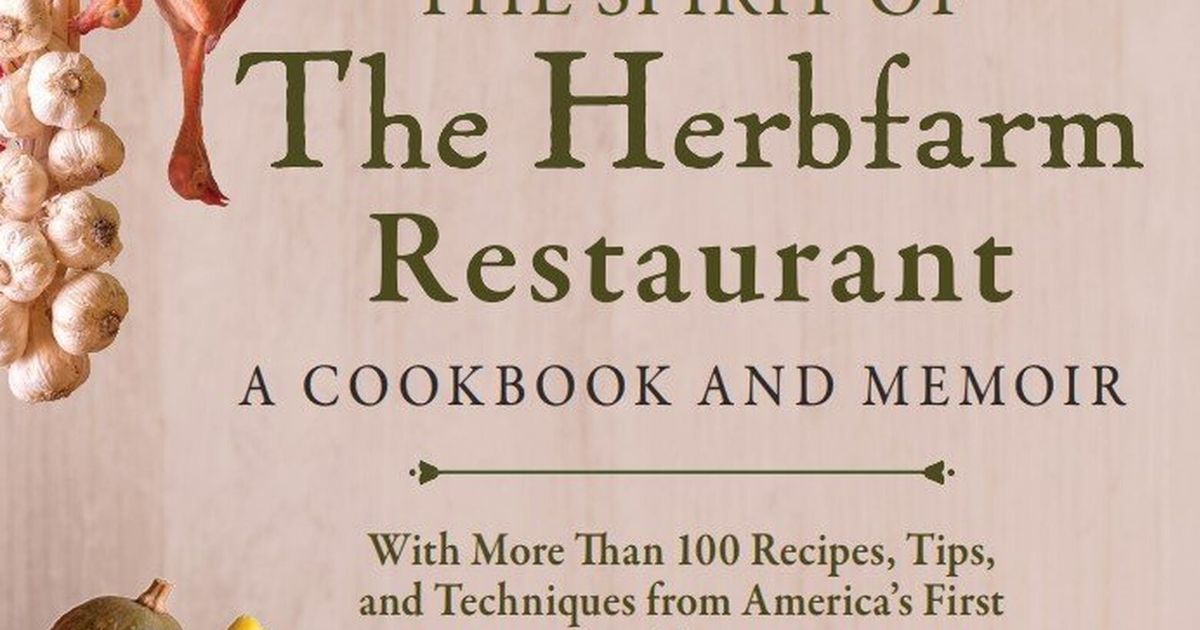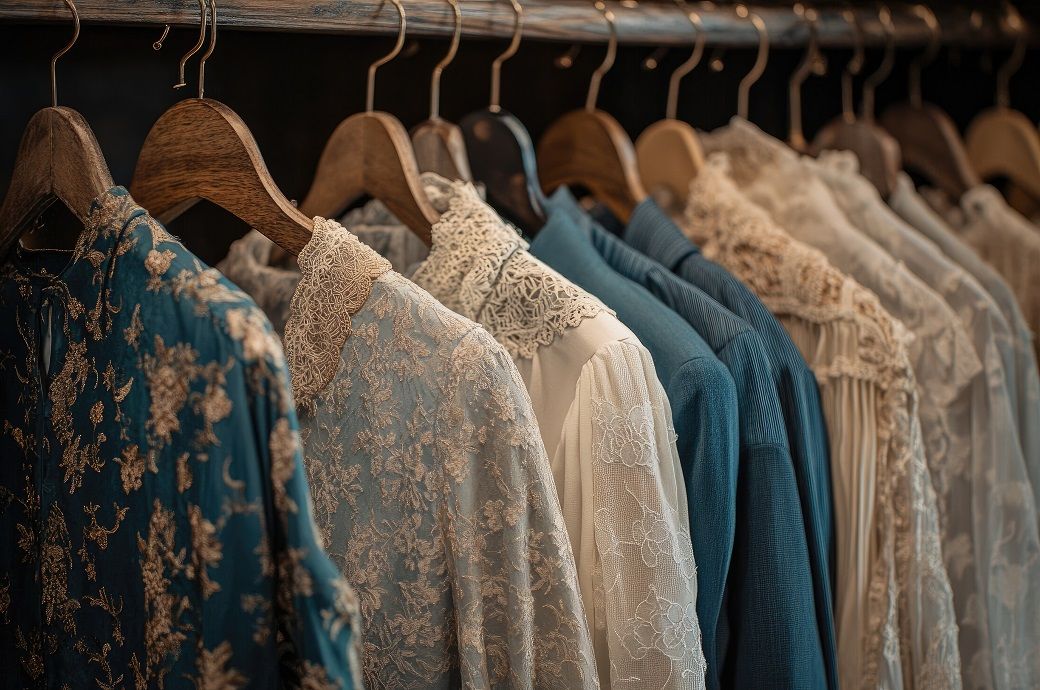THE HERBFARM started out in a garage on an actual herb farm 25 miles east of Seattle. Ron Zimmerman’s parents had acreage in Fall City, and after he and Carrie Van Dyck were married there in 1986, they started a restaurant of sorts: luncheon only, thrice a week, showcasing the herbs of the farm’s name and more strictly local foodstuff.
Those noontime repasts began with a tour led by Van Dyck of all that was growing at the moment, and The Herbfarm grew into a world-renowned destination for local, seasonal fine dining. Along the way came a literal trial by fire, a peripatetic few years and a new venue, but what never changed was the commitment to the best of the Pacific Northwest’s fields, forests and seas.
Today, Zimmerman is credited with starting the farm-to-table movement with The Herbfarm, with that credit coming from luminaries of high-end cuisine. He and Van Dyck ran the restaurant with, eventually, a series of four other chefs helming the kitchen until selling it in 2021 with big retirement plans.
Zimmerman died of liver cancer in April 2023. His posthumous “The Spirit of The Herbfarm Restaurant: A Cookbook and Memoir” arrives now due to the efforts of Van Dyck, with help from a host of longtime friends.
Here, Van Dyck talks about the book, her grieving process, zucchini blossoms and more. (This interview has been condensed.)
Bethany Jean Clement: Congratulations on the book — how did it come together?
Carrie Van Dyck: Ron essentially wrote the book by 1990 and ended up not publishing it for various reasons. But he kept claiming, over the years, that he really wished he had finished it. And he had the hard copy of it, and it was always moving around from desk to desk …
When he was diagnosed with cancer, I reminded him that he had not finished that book and that this was the perfect time to put it together. When he passed, he had essentially finished everything, [but] he didn’t have the time to actually fine-tune it to the level that he would have. He may have added more recipes if he had more time, but it was a good, evenly spread-out seasonal sort of thing.
The book-jacket blurbs contain incredible praise from Thomas Keller: “Years before I laid eyes on The French Laundry, Ron Zimmerman showed people how to eat seasonally, eat locally … [and] helped spark something of a revolution [in] high-end fine dining.” Then René Redzepi references Ron’s “genius and forward thinking,” and says that the restaurant that you and Ron built together “is nothing short of iconic and legendary.”
It’s pretty cool. [laughter] I feel pretty honored to have those on the back. And Ron would have just died and gone to heaven. Well, he did die — I don’t know if he went to heaven. [laughter] Anyway, I think he would have been pleased with the whole project.
It sounds as if you were able to honor the specificity with which Ron did things. It’s a beautiful volume, and the thought that went into it is palpable. The two ribbon bookmarks in different colors, so that the reader can save two different places; the heavy, creamy paper stock; and there’s the delicious photography of the food and the lovely ones of you and Ron. Is there any one thing that makes you happiest about the book?
I guess just that to the best of my ability, I feel like we did it in the way that Ron would have done it. There’s certainly some things that I feel like he would have done differently, but my way was always better. [laughter] I think I added nice touches to the book that he may not have done on his own.
I promised him that I would get that book out if he didn’t have time to finish it, so that he didn’t have an excuse. And I’ve gotten so much feedback from people thanking me for getting his words on paper and letting them live forever.
Ron’s death was just over a year ago … May I ask whether you’d like to talk about working on the book and your process of grieving?
When Ron passed, he had a water cremation process that is supposed to be the least environmentally hurtful process. [Then] he was packed up in many little packages. What we were supposed to do was travel the world after we retired, and that didn’t actually get to happen. So he has been given away in little bits and pieces to a number of his closest friends to take around the world and leave little bits of him here and there. So that’s one of the things that I have done in this past year, as far as my grieving process.
I just recently came back from Portugal. His death was right after my 70th birthday. We had this big celebration plan that we had to keep changing and making smaller and smaller. And then he wasn’t actually able to attend at all. So essentially, on my 70th birthday was when he left the conscious world, and a few days later he passed away. So I decided that what I needed to do [on the one-year anniversary] was not be here and be totally immersed in something else to distract me. And I went to bicycle through Lisbon to the south coast.
I’ve always bicycled, but not more than 5 or 8 miles at a time. Doing 40 miles in a day was an interesting process, and it was fun. It was great. And I’ll be going to New Zealand, and I’ll be traveling a few places in the United States, Canada and probably get around to Argentina. I’ve got a lot of places still to visit — a lot of places in Africa I want to see. I haven’t been to Antarctica.
Wonderful. Do you have a favorite part of the book?
One of the last things that he finished that was very important to him was the section on the 100-Mile Dinner, which is kind of the epitome of what The Herbfarm was always trying to do. We had many themes for our dinners at the farm, and one of those in the middle of summer was the 100-mile menu — everything, every ingredient, had to come from [within] 100 miles or less. He would brew beers to match the menu … One year, we had our own vineyard, and we made wine up on Hollywood Hill, and that was a 1-mile wine — pretty exciting.
In the book, he [also included] the food guidelines that he created in 1986, when we first joined his parents at The Herbfarm, and those guidelines are still followed [at the restaurant] today. So it’s kind of profound, and I think it’s important, intuitive and innovative at the same time. And when he wrote the memoir — there’s a lot of humor in how he writes.
With regard to the stuffed zucchini blossoms recipe shared here, Ron notes that back in the early days of The Herbfarm, he grew a huge patch of zucchini just for the flowers.
We actually did that for many years. If zucchinis are left to grow large, then they don’t create flowers. So we were always giving away [and] coming up with new recipes for zucchini. The whole process involves picking zucchinis every day, even if you’re not going to use them.
So much zucchini. I can’t even imagine.
Exactly — there was probably about half an acre of zucchini. You always have to wear long pants and long sleeves, because they’re really prickly when you walk through them. So in the middle of summer, it can be a pretty hot, uncomfortable process.
But worth it, right?
It was great.
Zucchini Blossoms with Zucchini Stuffing and Marinated Tomatoes
— From “The Spirit of The Herbfarm Restaurant” by Ron Zimmerman
Serves 4–8
For the zucchini:
8 zucchini blossoms, females, with their baby zucchini attached, pistil inside the flower removed
For the zucchini stuffing:
2 zucchinis, medium, sliced (2 cups)
¾ cup extra-virgin olive oil, divided
1 shallot, large, minced
3 garlic cloves, minced
3 tablespoons thyme, fresh, leaves off stem
5 tablespoons basil leaves, chopped
¾ cup breadcrumbs
Salt and pepper to taste
For the marinated tomatoes:
2 cups tomatoes, peeled, seeded and diced
3 garlic cloves, minced
2 shallots, minced
½ cup balsamic vinegar
½ cup extra-virgin olive oil
¼ cup basil leaves, finely chopped
Salt and pepper to taste
To make the zucchini stuffing:
1. Slice the zucchinis into rounds. Heat pan, add a tablespoon of olive oil and sweat the zucchini until it softens. Add shallot and garlic. Cook 2 minutes.
2. Add thyme leaves. Cook until the zucchini is soft.
3. Place in a food processor along with basil, breadcrumbs and remaining olive oil. Process until smooth. Add more oil or breadcrumbs as needed until the mixture will almost hold together. Season with salt and pepper to taste.
To make the marinated tomatoes:
1. In a medium skillet, cook tomatoes, garlic and shallots until most of the liquid has evaporated. Remove from heat.
2. In a medium bowl, combine vinegar, olive oil and basil. Add the cooked tomato mixture. Season with salt and pepper to taste. Mix well. Let stand at least 1 hour before serving.
Stuff blossoms and bake:
Spoon the zucchini stuffing into a pastry bag. Pipe the stuffing into the blossoms. Twist the blossom tips shut. Brush blossoms lightly with olive oil, and place on an oiled baking sheet. Bake 3 minutes at 450°F.
Finishing:
Serve blossoms warm atop a pool of the marinated tomatoes.
Serving variation:
Trim zucchini ends into a point. Make ¼-inch cuts down to the blossom. Fill blossom ¾ full, and twist to seal well. Bake and stand these packets upright on the tomatoes.










